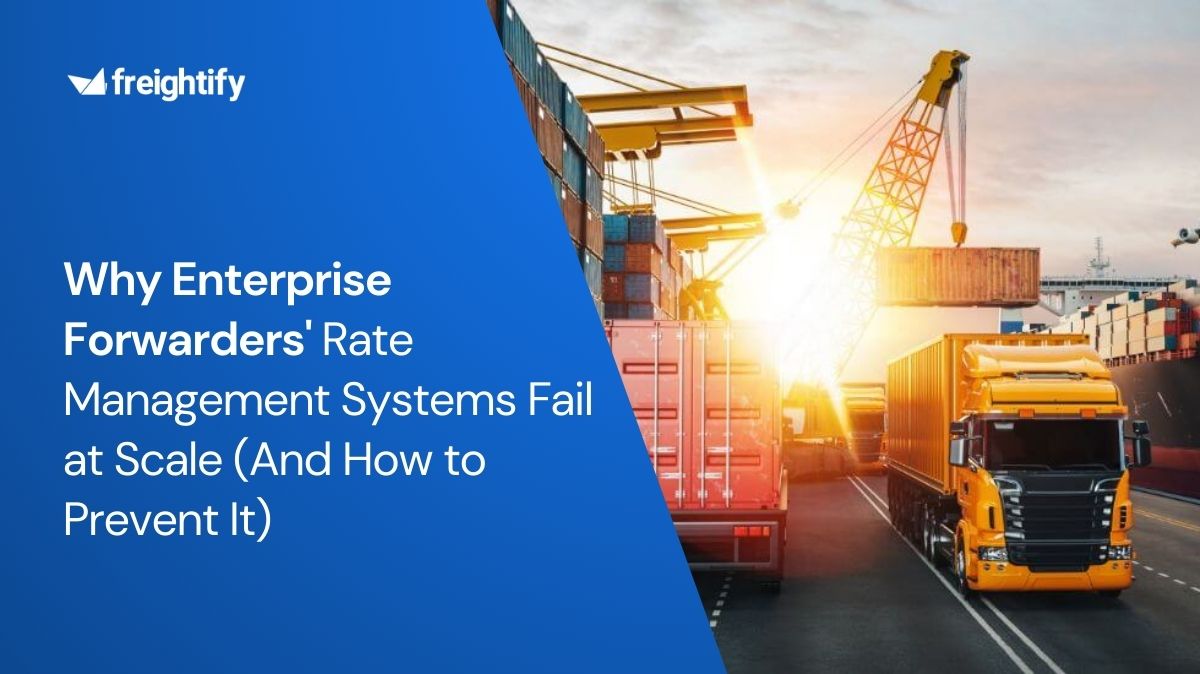Shipping routes facilitate international trade and serve as the link between countries and continents. While several shipping routes connect different global markets, some are busier and larger than others.
This article will explore the world’s top five busiest shipping trade routes in 2024.
The Busiest Shipping Trade Routes in The World Shipping routes are vital arteries of global commerce, supporting immense volumes of trade and connecting major economic hubs.
In terms of volume, ocean freight is the most important conduit for international shipping, accounting for over 80% of global trade by volume. This reflects on major shipping routes, tending to keep them busy. The stronger the economies on either end of a trade lane, the busier the route tends to become. So, what are the busiest shipping routes in the world?
1. English Channel ( Home to The Dover Strait) The English Channel, also known as La Menche in French, is the busiest shipping trade route in the world and a critical route for international shipping, mainly because of the economic might of the markets it connects. The channel is home to the Dover Strait, a narrow body of water separating Southern England from Northern France. It also connects the North Sea to the Atlantic Ocean.
Traffic and Cargo The English Channel is the busiest trade route in the world, handling north of 500 ships daily and a cargo volume of 1.4 billion tons annually. It allows a wide variety of cargo to be transported into Europe, including oil and gas, consumer goods, agricultural products (cold chain), industrial goods, health and chemicals, and many others.
Strategic Location The English Channel is seen as a crucial link between Europe and the rest of the world because it connects the North Sea to the Atlantic. It is home to the Dover Strait, the narrowest point on the Canal, and is just 21 miles away from Calais in France.
Challenges With The English Canal Due to the high traffic volume, the canal is continuously plagued by congestion, and the weather doesn’t help matters in many cases. The fogs and storms that often brew on the channel lead to delays and sometimes critical disruption in supply chains.
2. The Malacca Strait The Strait of Malacca is the world's second busiest shipping trade route. Still, it is a narrow waterway that separates the Malay Peninsula from the Indonesian island of Sumatra. The Strait stretches for about 580 miles and is one of the world’s oldest and most significant trade routes. In the past, it was a well-known silk and spices trade route.
Traffic and Cargo The Malacca Strait handles 25% of internationally traded goods, north of 96,000 vessels annually.
Strategic Location The Malacca Strait connects the Indian and Pacific Oceans and major economies across Europe, Asia, Africa, and the Middle East.
Challenges With The Malacca Strait The Malacca Strait is a hot zone for piracy. At its narrowest point, it stretches 1.7 miles, making it susceptible to choking and congestion. Its shallow depth negatively impacts the passage of ships.
3. The Strait of Hormuz The Strait of Hormuz comes third on the list of the busiest shipping trade routes in the world, but it is also the last natural shipping route. For the Middle East, the Strait is critical as their gateway to the world.
Traffic and Cargo Type Being the Middle East’s primary channel means that it handles almost all the trade in that region, including large volumes of oil. This is what makes it a major shipping route. The Strait controls the largest oil shipment and handles between 20-30% of the world’s seaborne oil, with roughly 21 million barrels passing daily. Beyond the crude oil, it oversees the transportation of a significant amount of liquified natural gas, mainly from Qatar.
Strategic Location It is a small canal near the mouth of the Persian Gulf and the only marine route connecting Iran and Oman from the Persian Gulf to the open ocean. Its strategic positioning means it gives countries in the region a link to the outside world, making it one of the most critical shipping routes in the world.
Challenges of the Strait of Hormuz Recent events show that the Strait of Hormuz is extremely vulnerable to geopolitics. Concerns about pollution and oil spills are also increasing because of the large amount of oil moving through it.
4. The Suez Canal The Suez Canal is the world's fourth busiest shipping trade route, It is a man-made waterway under the Egyptian government's control that connects the Mediterranean Sea to the Red Sea. Construction began on the Canal in 1859 and was concluded by 1869 by France’s Suez Canal Company, which was supposed to operate the waterway for 99 years.
Traffic and Cargo Type Although man-made, the Suez Canal is the world’s fourth busiest shipping lane, with over 20,000 vessels passing through annually. Cargo types typically transported along these routes include cargo, grain, coal, and other raw materials.
Strategic Location The Suez Canal is at the crossroads of Europe, Asia, and Africa. Its connection to all three provides an essential shortcut between Europe and Asia, making it the shortest maritime route between the Mediterranean and the Indian Ocean. This means ships traveling the route cut travel time and cost significantly.
Challenges With the Suez Canal The location is excellent for cutting travel time, but the size of the Canal means there will be many restrictions on larger ships that want to pass through. The region's political volatility also raises concerns about potential disruption.
5. The Panama Canal The Panama Canal is fifth in the world’s busiest shipping trade routes list. However, like the Suez Canal, it is also man-made. Like the Suez, the French began construction on the Panama Canal in the 1880s. They struggled this time and could not make it work. Diseases and low worker morale plagued its construction. After some time, when they could no longer continue, the United States took over. That was in 1904, and by 1914, the Canal was completed.
Traffic and Cargo The Panama Canal handles over 13,000 vessels annually, including consumer goods, vehicles, and liquified natural gas. Thanks to the 2016 expansion, its capacity increased significantly as well.
Strategic Location The Canal is a critical link between North and South America. It creates a shortcut that ensures vessels do not have to travel around Cape Horn, saving them significant time and money.
Challenges With the Panama Canal Although the recent expansions allow larger ships to pass through, the Panama Canal still cannot accommodate the largest container vessels in the world that haul over 20,000 TEUs. This becomes a problem and may limit the passage of the newer ultra-large container Ships (ULCS). Moreover, the Panama Canal depends on freshwater and can be threatened by drought and climate change.
How to Manage Transit Time in Shipping Route Transit times can make all the difference in shipping operations. As a freight forwarder, you want to help your customers and shippers streamline their shipment moves, even across heavily trafficked trade lanes. Some strategies can be leveraged to achieve this:
1. Route Optimization Route optimization ensures you take the shortest route between the origin and destination ports. As a freight forwarder, you can achieve this by leveraging technology to consider weather, security issues, and other factors that may cause delays or disruptions. This way, you can always know the most efficient routing before setting sail.
2. Choose Reliable Carriers The wrong carrier selection will dampen the entire freight process. A premium has to be placed on getting the right partner, which means researching, finding out their history in the market, and then effectively negotiating to acquire the best rates for shippers .
3. Ensure Packaging and Documentation Documentation is another critical element, and discrepancies could cause delays at ports. It will help avoid delays from customs authorities. Adequate packaging is also necessary to prevent damage and the problems that come along with that.
Join 200+ Customers Across 45 Countries That Leverage Freightify Freightify is the smarter freight forwarding software for companies to connect ocean carrier rates & schedules to your freight forwarding operations . The platform is your one-stop solution to retrieve all live carrier rates and schedules. Beyond that, it is a haven for easy integration, offline and online operations, broader coverage, accurate data, speedy access to rates, and real-time updates across the shipping world.
Frequently Asked Questions What are ocean trade lanes? Ocean trade lanes are routes that ships must follow to effectively transport goods across the ocean. These routes are determined by factors such as water depth and currents.
What are the essential routes along major world trade lanes? There are a few of them, but the most important are:
East Asia - North America (trans-Pacific)
Europe - Asia (Suez Canal)
North America - Europe (trans-Atlantic)
What commodities are transported on vital global trade lanes? Ocean vessels come in various models to handle a variety of goods, from machinery and crude oil to packaged or frozen food and vehicles. Livestock, Equipment, Factory Parts, mineral ores, and chemicals are also commonly shipped.
What is the cargo volume transported on major global trade lanes? According to the International Chamber of Shipping, about 11 billion tons of cargo is transported across all major global trade lanes annually. That is about 1.3 tons per person.
What are the types of shipping/maritime routes? Maritime ports are designed according to the type of commercial service they provide. There are three main types, and they include:
Port-to-Port Inter-Range Multi-Range 



















